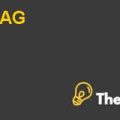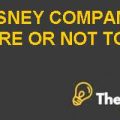
Introduction
The company is manufacturing tropical fruit pulp-purees and more emphasisis given to the requirements of the customer. The company sources the fruits and vegetables from farms and orchard near to the company.
The company has always established strong ties with the farmers and agricultural community in the area where the firm is operating, this relationship and cooperation has made the uninterrupted supply of the vegetables and the fruits to the company. The fruit and vegetable extracts are handled with extreme care during the inbound delivery and during the production of the juices. The company utilizes both canning and aseptic processing to add preservative value of the fruit juices.
The products of the company are packaged in the soft packages, typically a mix of paper and polythene and aluminum.This type of packaging protects the juices from microbiological organisms, contaminants and degradation. Moreover, this eliminates the need of the refrigeration of the juices and maintains the quality and freshness of the juices at high standard and quality.
Problem statement
Maria is considering the possible expansion plan.For this expansion, Maria is analyzing the opportunities in India as the demand of the processed food is rapidly growing in that country as she feels that this is the right time for herfirm toexpand and to invest in thefood market of India.
The proposed expansion plan will result in the possible export of the frozen food products; therefore the capacity of the company’s manufacturing will also have to beexpandedin order to meet the demand in India. Maria has worked in the projection of the future revenues and costs of the frozen food company, for this purpose she has made the projected income statement and projected balance sheet of the consecutive five years of the operation of the company.
Analysis
Free cash flows:
For the financial analysis of the proposed project, Maria has decided to make the calculations of the free cash flows generated by the project. The calculation of the company’s future cash flows can be seen in Exhibit#1. In the calculation of the free cash flows, the projected profit is adjusted against the cash and non-cash items in the balance sheet and the income statement of the company.
The depreciation charge of the year is added back to the profit as it is a non-cash item.Thecapital expenditure; for example, purchase of the non-current assets is deducted from the profit.Finally,the changes in the working capital are deducted from the profit,which finally gives the free cash flows of the project.
WACC:
As the free cash flows belong to future periods therefore, Maria has been trying to find out the appropriate discounting factor for the discounting of these future free cash flows of the Frozen goods. WACC is the weighted average amount of the cost of debt and the cost of equity of the company, this is cost of capital of the company, which is largely used by many companies to discount theircash flows of proposed projects in order to give the figure of the NPV of the project, which is thekey in project appraisal process of the company.
In the case of the frozen foods, 10% of the weighted average cost of capital is calculated, which may be used in the discounting of the cash flows of the proposed project of the company.
WACC is calculated by taking the cost of debt figure of 8% given in the case and cost of equity of 11% calculated by taking the beta of Atlanta India.Thebeta of Atlanta is converted to the un-geared beta asset and then converted to the beta equity of frozen foods by re-gearing the beta asset of Atlanta according to the debt and equity structure of frozen foods.In addition,the cost of equity is calculated by CAPM model by putting the beta equity of the frozen foods. The calculations of the WACC and Cost of equity of the frozen foodare given in the Exhibit#1.............
This is just a sample partial case solution. Please place the order on the website to order your own originally done case solution.









